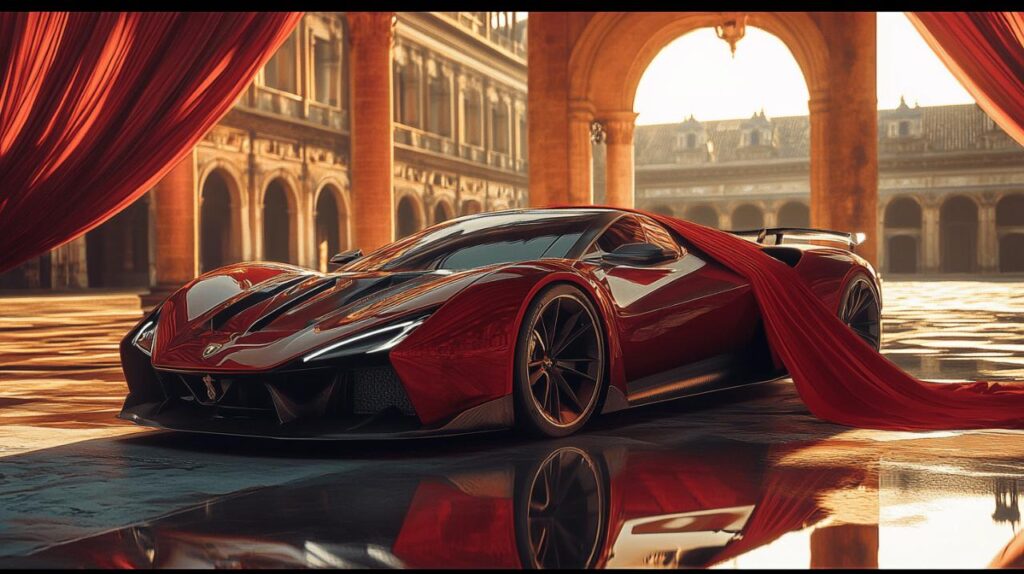Few automotive marques possess a brand identity as visually striking and culturally distinctive as Lamborghini. The Italian luxury car manufacturer has forged a unique connection between the world of high-performance motoring and the fierce tradition of Spanish bullfighting. This relationship is not merely superficial; it permeates every aspect of the company's image, from its iconic emblem to the very names bestowed upon its most celebrated models. Understanding this connection reveals much about the spirit and philosophy that defines this legendary brand.
The origins of lamborghini's bullfighting connection
Ferruccio Lamborghini's Passion for the Spanish Corrida
The story behind Lamborghini's bullfighting inspiration begins with its founder, Ferruccio Lamborghini, whose personal fascination with the Spanish corrida became a defining element of the marque's identity. Born under the Taurus zodiac sign, Ferruccio possessed a natural affinity for the symbolism of the bull, which resonated deeply with his own character and aspirations. His interest in Spanish fighting bulls was not simply a passing fancy but a genuine passion that influenced his vision for the luxury automobile brand he would create. This personal connection ensured that the imagery and spirit of bullfighting would become inseparable from the company's public persona, creating a narrative that continues to captivate enthusiasts around the world.
From Agricultural Machinery to Luxury Motoring: The Birth of an Icon
Before Lamborghini became synonymous with high-performance supercars, the company began its journey in a rather different field. In 1948, Ferruccio Lamborghini established a business as a tractor manufacturer, producing robust agricultural machinery that served the needs of Italy's farming communities. The initial logo for this enterprise was a modest monochrome pyramid featuring the initials representing the founder's name. However, as Ferruccio's ambitions evolved and his passion for luxury automobiles grew, so too did the visual identity of his brand. By 1963, the first official car logo emerged, featuring a charging bull set against a red shield. This marked the beginning of a transformation that would see Lamborghini evolve from a producer of practical farming equipment into one of the most prestigious names in automotive luxury.
The raging bull: decoding lamborghini's powerful emblem
Symbolism behind the charging bull logo
The raging bull that serves as Lamborghini's emblem is far more than a decorative flourish; it embodies a carefully considered set of values and aspirations. The charging bull symbolises raw strength, untamed spirit, and an unrelenting drive for power and performance. This imagery speaks directly to the core attributes of the vehicles themselves, which are designed to deliver exhilarating speed and unmatched prowess on the road. The shield upon which the bull is positioned further reinforces these themes, representing protection, security, and an indomitable sense of strength. Together, these elements create a visual identity that conveys both aggression and elegance, capturing the dual nature of Lamborghini's brand philosophy.
How the Badge Embodies Aggression and Performance
Over the decades, Lamborghini's logo has undergone several refinements, each iteration enhancing its impact and sophistication. Between 1972 and 1974, the design adopted gold and black hues, a colour palette chosen to reflect luxury, wealth, and formality. From 1974 to 1998, the logo was simplified with a monochrome scheme, emphasising clarity and timeless appeal. The most recent evolution, introduced in 1998 and still in use today, features a three-dimensional golden bull set against a black background, a design that exudes modernity and prestige. The choice of black and gold is particularly significant, as these colours have long been associated with elegance and opulence. The bull itself, depicted in a state of dynamic motion, captures the essence of aggression and high performance that defines every Lamborghini vehicle. This emblem has achieved remarkable brand recognition, with studies indicating that a substantial majority of people in the United States can identify the Lamborghini logo, a testament to its powerful visual impact.
Famous fighting bulls immortalised through model names
Legendary bulls that inspired lamborghini's most celebrated automobiles
 One of the most distinctive aspects of Lamborghini's brand identity is the tradition of naming its automobiles after famous fighting bulls from Spanish corrida history. This practice is a direct reflection of Ferruccio Lamborghini's deep admiration for the sport and its storied combatants. Models such as the Miura, Diablo, and Aventador each bear the name of a bull renowned for its courage, ferocity, and legendary status in the bullring. The Miura, for instance, was named after a celebrated breeder of fighting bulls, whilst the Diablo and Aventador commemorate individual bulls that demonstrated extraordinary bravery and prowess. These names are not arbitrarily chosen; they are carefully selected to evoke the same qualities of strength, passion, and untamed spirit that Lamborghini seeks to embody in its vehicles.
One of the most distinctive aspects of Lamborghini's brand identity is the tradition of naming its automobiles after famous fighting bulls from Spanish corrida history. This practice is a direct reflection of Ferruccio Lamborghini's deep admiration for the sport and its storied combatants. Models such as the Miura, Diablo, and Aventador each bear the name of a bull renowned for its courage, ferocity, and legendary status in the bullring. The Miura, for instance, was named after a celebrated breeder of fighting bulls, whilst the Diablo and Aventador commemorate individual bulls that demonstrated extraordinary bravery and prowess. These names are not arbitrarily chosen; they are carefully selected to evoke the same qualities of strength, passion, and untamed spirit that Lamborghini seeks to embody in its vehicles.
The deliberate naming convention that defines the marque
This naming convention is far from incidental; it represents a deliberate and consistent strategy to reinforce the brand's connection to bullfighting and the values it represents. By christening each model after a legendary bull, Lamborghini creates a narrative thread that links every new vehicle to a rich cultural tradition. This approach not only differentiates the marque from its competitors but also imbues each automobile with a sense of history and character that resonates with enthusiasts. The practice has become so integral to the brand's identity that it is now expected by aficionados, who anticipate the unveiling of each new model name with great interest. This tradition underscores the extent to which Ferruccio Lamborghini's personal passions have shaped the marque's enduring legacy.
Sant'agata bolognese: where bullfighting meets italian automotive excellence
The headquarters that houses a cultural legacy
The town of Sant'Agata Bolognese serves as the spiritual and operational heart of the Lamborghini marque. It is here that the company's headquarters are located, a site that has become synonymous with the fusion of Italian craftsmanship and the bold spirit of the Spanish corrida. This location is more than just a manufacturing facility; it is a cultural landmark where the traditions and values that define Lamborghini are preserved and celebrated. Visitors to Sant'Agata Bolognese can witness firsthand the meticulous process by which these extraordinary vehicles are conceived and brought to life, all within an environment steeped in the heritage that Ferruccio Lamborghini established decades ago.
Maintaining tradition whilst pioneering luxury motoring innovation
Despite the passage of time and the evolution of automotive technology, Lamborghini has remained steadfast in its commitment to the traditions that underpin its brand identity. The company continues to honour the legacy of the raging bull, ensuring that each new generation of vehicles reflects the same values of power, performance, and untamed spirit that characterised the earliest models. At the same time, Lamborghini has embraced innovation, consistently pushing the boundaries of what is possible in luxury motoring. This delicate balance between tradition and progress is evident in the brand's impressive commercial success. In 2022, the company reported a significant increase in vehicle sales, alongside revenue figures that underscored its position as a leading force in the luxury automotive market. This achievement demonstrates that Lamborghini's unique brand identity, rooted in the imagery and ethos of bullfighting, continues to resonate powerfully with discerning customers around the globe. The marque's ability to maintain its cultural heritage whilst pioneering new frontiers in automotive excellence ensures that the spirit of the raging bull will endure for generations to come.

